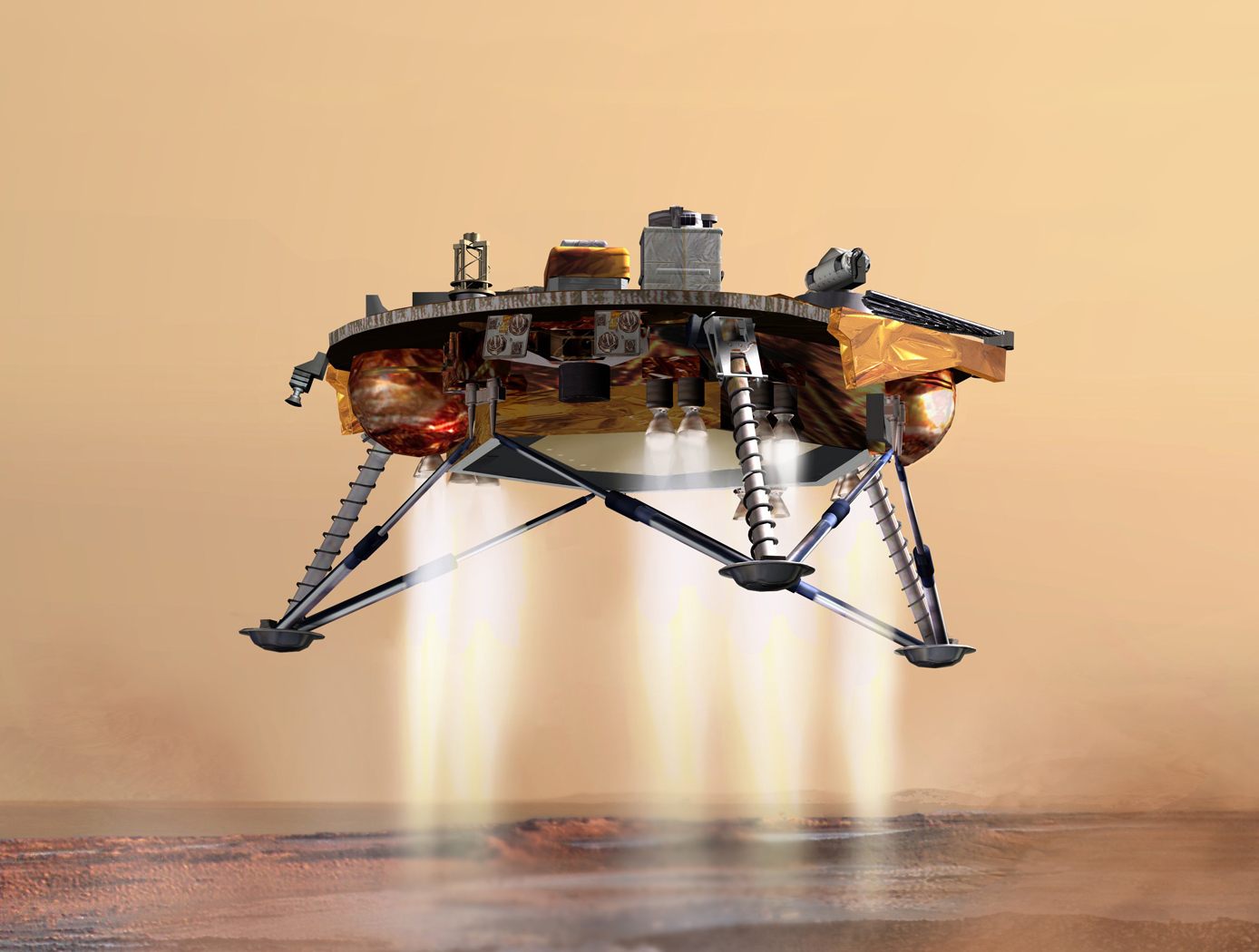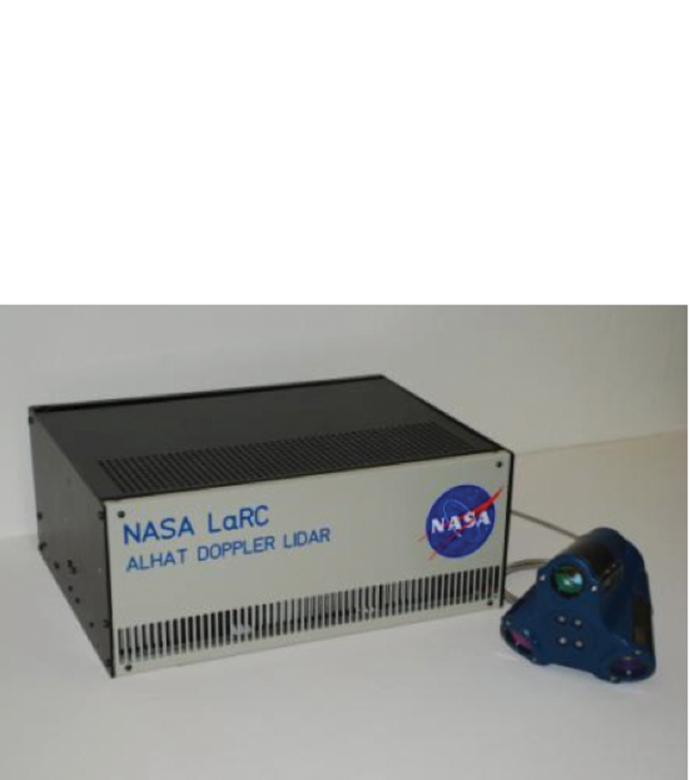Laser Linear Frequency Modulation System
optics
Laser Linear Frequency Modulation System (LAR-TOPS-95)
Improved accuracy in light detection and ranging and other optical measurement arrays
Overview
NASA's Langley Research Center has made a breakthrough improvement in laser frequency modulation. Frequency modulation technology has been used for surface mapping and measurement in sonar, radar, and time-off-light laser technologies for decades. Although adequate, the accuracy of distance measurements made by these technologies can be improved by using a high-frequency triangular-waveform laser instead of a sine waveform or
lower frequency radio or microwaves. This new system generates a triangular modulation waveform with improved linearity that makes possible precision laser radar (light detection and ranging [lidar]) for a variety of applications.
The Technology
For decades, frequency modulation has been used to generate chirps, the signals produced and interpreted by sonar and radar systems. Traditionally, a radio or microwave signal is transmitted toward the target and reflected back to a detector, which records the time elapsed and calculates the targets distance. Reflected signals can be heterodyned (combined) with output signals to determine the Doppler frequency shift and the target velocity. Accuracy of these systems can be enhanced by increasing the bandwidth of the chirp, but noise generated during heterodyning at high frequencies decreases the signal-to-noise ratio, increasing measurement error.
Previous attempts at laser frequency modulation that relied on adjusting the laser cavity length have resulted in only sine wave or imperfect triangle waveforms. Heterodyning of imperfect, non-linear waveforms or sine waveforms will significantly degrade the effective signal-to-noise ratio, making such systems impractical. In contrast, the current technology produces a single, high-frequency laser that is passed to an electro-optical modulator, which generates a series of harmonics. This range of frequencies is then passed through a band-pass optical filter so the desired harmonic frequency can be
isolated and directed toward the target. By modulating the electrical signal applied to the electro-optical modulator, a near perfect triangular waveform laser beam can be produced. Transmission and detection of this highly linear triangular waveform facilitates optical heterodyning for the calculation of precise frequency and phase shifts between the output and reflected signals with a high signal-to-noise ratio. By combining this information with the time elapsed, the location and velocity of the target can be determined to within 1 mm or 1 mm/s.


Benefits
- Precise measurement of target distance and speed to 1 mm and 1 mm/s
- Ability to measure air velocity, ground velocity, target distance and velocity, aircraft altitude, angle of attack, and atmospheric wind vector in one system
- More accurate and reliable than current pitot-tube aircraft instrumentation that can ice up and requires frequent calibration
- Order of magnitude improvement in accuracy over time-of-flight laser pulse systems, and multiple orders of magnitude improvement as compared to radar systems for distance and velocity measurements
- Generation of a laser frequency modulation triangular waveform with improved linearity
Applications
- Space - Spacecraft landing and docking, planet topography measurement
- Manufacturing and construction - Precision alignment of large structures
- Robotics - Movement accuracy and maneuverability in confined spaces
- Aerospace - Replacement of pitot-static instrumentation systems for air velocity, ground velocity, altitude, and attitude measurements; target ranging, and 3-D visualization of structures and surfaces
- Surveillance and security - Movement detection and target visualization
- Military - Ground and target imaging
- Spectroscopy - Molecule identification
Similar Results

More Reliable Doppler Lidar for Autonomous Navigation
The NDL uses homodyne detection to obtain changes in signal frequency caused by a target of interest. Frequency associated with each segment of the modulated waveform collected by the instrument is positive or negative, depending on the relative range and direction of motion between the NDL and the target. Homodyne detection offers a direct measurement of signal frequency changes however only the absolute values of the frequencies are measured, therefore additional information is necessary to determine positive or negative sign of the detected frequencies. The three segmented waveform, as opposed to conventional two-segmented ones, allows for resolving the frequency sign ambiguity. In a practical system, there are times when one or more of the three frequencies are not available during a measurement. For these cases, knowledge of the relative positions of the frequency sideband components is used to predict direction of the Doppler shift and sign, and thus make correct range and velocity measurements. This algorithm provides estimates to the sign of the intermediate frequencies. The instrument operates continuously in real time, producing independent range and velocity measurements by each line of sight used to take the measurement. In case of loss of one of the three frequencies, past measurements of range and velocity are used by the algorithm to provide estimates of the expected new range and velocity measurement. These estimates are obtained by applying an estimation filter to past measurements. These estimates are used during signal loss to reduce uncertainty in the sign of the frequencies measured once signals are re-established, and never to replace value of a measurement.

Photon-Efficient Scanning LiDAR System
This new methodology selectively scans an area of interest and effectively pre-compresses the image data. Instead of using LiDAR resources to gather redundant data, only the necessary data is gathered and the redundancy can be used to fill in up-sampled data using intelligent completion algorithms. The system utilizes a unique LiDAR system to collect a pattern of specific points across a given area by modulating the incoming light, creating a pattern that can be decoded computationally to reconstruct a scene. By designing specific coding patterns, the system can strategically skip certain measurements during the scanning process to create an under-sampled image area.
The system reconstructs the under-sampled area to recreate an accurate representation of the original object or area being scanned. As a result, redundant data is prevented from being collected by reducing the number of required measurements and data condensed in post-collection to reduce power consumption. By selectively skipping certain pixels during the scan and using sophisticated recovery algorithms to reconstruct the omitted information, the system makes more efficient use of the available photons, thereby enhancing overall data collection.
This technology represents a significant advancement in LiDAR systems, offering a more useful method for data collection and processing and addresses the challenges of power consumption and data redundancy, allowing for more sustainable and effective remote sensing applications. This technology can offer advantages in applications such as mapping for construction, surveying, forestry, or farming as well as computer vision for vehicles or robotics.

Receiver for Long-distance, Low-backscatter LiDAR
The NASA receiver is specifically designed for use in coherent LiDAR systems that leverage high-energy (i.e., > 1mJ) fiber laser transmitters. Within the receiver, an outgoing laser pulse from the high-energy laser transmitter is precisely manipulated using robust dielectric and coated optics including mirrors, waveplates, a beamsplitter, and a beam expander. These components appropriately condition and direct the high-energy light out of the instrument to the atmosphere for measurement. Lower energy atmospheric backscatter that returns to the system is captured, manipulated, and directed using several of the previously noted high-energy compatible bulk optics. The beam splitter redirects the return signal to mirrors and a waveplate ahead of a mode-matching component that couples the signal to a fiber optic cable that is routed to a 50/50 coupler photodetector. The receiver’s hybrid optic design capitalizes on the advantages of both high-energy bulk optics and fiber optics, resulting in order-of-magnitude enhancement in performance, enhanced functionality, and increased flexibility that make it ideal for long-distance or low-backscatter LiDAR applications.
The related patent is now available to license. Please note that NASA does not manufacturer products itself for commercial sale.

Super Resolution 3D Flash LIDAR
This suite of technologies includes a method, algorithms, and computer processing techniques to provide for image photometric correction and resolution enhancement at video rates (30 frames per second). This 3D (2D spatial and range) resolution enhancement uses the spatial and range information contained in each image frame, in conjunction with a sequence of overlapping or persistent images, to simultaneously enhance the spatial resolution and range and photometric accuracies. In other words, the technologies allows for generating an elevation (3D) map of a targeted area (e.g., terrain) with much enhanced resolution by blending consecutive camera image frames. The degree of image resolution enhancement increases with the number of acquired frames.

Optical Head-Mounted Display System for Laser Safety Eyewear
The system combines laser goggles with an optical head-mounted display that displays a real-time video camera image of a laser beam. Users are able to visualize the laser beam while his/her eyes are protected. The system also allows for numerous additional features in the optical head mounted display such as digital zoom, overlays of additional information such as power meter data, Bluetooth wireless interface, digital overlays of beam location and others. The system is built on readily available components and can be used with existing laser eyewear. The software converts the color being observed to another color that transmits through the goggles. For example, if a red laser is being used and red-blocking glasses are worn, the software can convert red to blue, which is readily transmitted through the laser eyewear. Similarly, color video can be converted to black-and-white to transmit through the eyewear.



